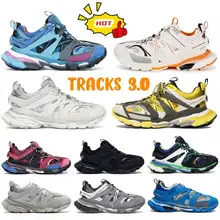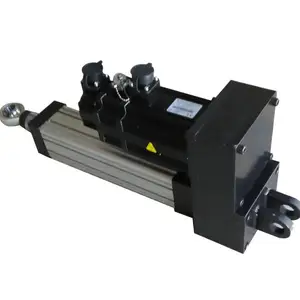Motion Platform for Simulation Systems Explained
A motion platform for simulation systems is a specialized device crafted to deliver authentic movements and sensations for various applications, including driving simulators, flight simulators, and theme park rides. These platforms are intricately designed to emulate the dynamic motions of vehicles or other objects, creating an immersive experience that replicates the physical impacts of the simulated environment on the user. They find widespread utility in entertainment venues, educational institutions, and commercial establishments aiming to offer a simulated encounter closely resembling reality.
The fundamental concept behind a motion platform is its responsiveness to input signals from a control system executing a pre-programmed sequence or interactive software. This control mechanism can range from manual operator input to fully automated systems that react to in-game or onboard computer algorithms. Typically, the platform's movements are governed by hydraulic, pneumatic, or electric actuators that furnish the necessary force and displacement to imitate the pitch, roll, and yaw of a vehicle. These systems can be programmed to deliver a spectrum of motion, from basic linear movements to intricate patterns involving rotations and tilts.
End-users of motion platforms span various sectors, encompassing entertainment, training, research, and development. For example, commercial enterprises might integrate them as a focal point in amusement parks or shopping centers. Educational institutions could incorporate them into their curriculum to provide students with hands-on experiences in a controlled setting. In professional training scenarios, motion platforms are deployed to simulate activities that are either hazardous or prohibitively expensive to practice in real life, such as operating heavy machinery or piloting aircraft.
Diverse Categories of Motion Platforms for Simulation Systems
A broad array of motion platforms is available on Alibaba.com to cater to diverse simulation requirements, each offering distinct features and levels of realism tailored for specific applications:
-
Electric Motion Platforms: These platforms utilize electric motors for motion, known for their quiet operation and precise movements. They are prevalent in contemporary commercial simulation systems due to their user-friendly nature and ease of maintenance.
-
Hydraulic Motion Platforms: These platforms employ hydraulic systems to generate robust and dynamic movements, making them suitable for high-intensity simulation experiences like racing or flight simulations.
-
Mechanical Motion Platforms: Commonly used in simpler applications, these platforms can induce motion through mechanical linkages or cam systems. Despite their relatively straightforward design, they can still provide an immersive experience.
-
3 Degrees of Freedom (3DOF): This type of platform enables motion along three axes - pitch, roll, and yaw, ideal for applications requiring a moderate level of realism such as driving or basic flight simulations.
-
6 Degrees of Freedom (6DOF): Catering to advanced simulation experiences, 6DOF platforms incorporate three additional degrees of freedom, facilitating linear movements along the three axes of pitch, roll, and yaw. Such platforms are commonly found in high-end commercial simulators necessitating extensive movement capabilities.
Each category serves a distinct purpose in varied environments, from entertainment venues striving for complete immersion to educational institutions mandating high-fidelity simulation for training objectives.
Guidelines for Selecting Motion Platforms for Simulation Systems
Choosing the appropriate Motion Platform for a Simulation System entails evaluating several factors:
-
Intended Use: Determine whether the platform will be utilized for vehicle training, entertainment, or research, as this factor influences the type of platform required.
-
Compatibility: Verify the platform's compatibility with your simulation system's software and hardware components.
-
Motion Range: Assess the extent of movement necessary for the platform to support, considering that different platforms offer varying degrees of freedom of movement.
-
Scalability: If there are plans to expand the simulation system in the future, opt for platforms offering scalability.
-
Quality and Durability: Given the continuous usage these platforms will endure, opt for durable materials like metals or fiberglass capable of withstanding heavy wear and tear.
Businesses seeking to procure these platforms should also take into account the after-sales support and maintenance services provided by suppliers on Alibaba.com.
Insight into Motion Platform for Simulation Systems on Alibaba.com
When sourcing top-tier motion platforms for simulation systems, Alibaba.com emerges as a global marketplace connecting enterprises with an extensive network of suppliers offering a wide range of products. Whether in need of a compact 2-degree-of-freedom platform for intimate VR experiences or a full-scale 6-degree-of-freedom model for industrial training scenarios, Alibaba.com adeptly caters to these requirements.
The platform's user-friendly interface empowers businesses to filter through options based on material composition, capacity, color, and other critical factors essential for tailoring a product to specific needs. Furthermore, Alibaba.com's Trade Assurance service furnishes an added layer of security by safeguarding payments until delivery confirmation, fostering peace of mind throughout every transaction.
Alibaba.com's dedication to empowering small and medium-sized businesses globally is evident through its commitment to streamlining global trade. With features supporting mobile purchases, multilingual communication, comprehensive order handling, and customizable delivery services, Alibaba.com epitomizes reliability and convenience in sourcing high-caliber motion platforms suitable for diverse simulation applications.
Frequently Asked Questions (FAQs) about Motion Platform for Simulation Systems
Understanding Motion Platforms:
A motion platform is a controlled platform capable of moving in various directions, providing realistic motion simulations through hydraulic or electronic mechanisms. These platforms find utility across industries like manufacturing, entertainment, and transportation to create immersive experiences.
Operational Mechanisms of Motion Platforms:
Motion platforms operate by utilizing hydraulic, pneumatic, or electric actuators to deliver controlled movements in response to user inputs. Hydraulic systems leverage pressurized fluids, pneumatic systems utilize air for energy transfer, while electric systems rely on motors for rotational motion.
Variants of Motion Platforms:
Various types of motion platforms exist, including 1-DOF, 3-DOF, 6-DOF, and full flight simulators, each offering different degrees of freedom of movement tailored to simulate specific motion ranges.
Choosing the Right Size of Motion Platform:
Opting for the suitable size of a motion platform relies on available space and the anticipated number of users. Selecting a platform with an appropriate capacity aligned with the intended use is crucial for an optimal user experience.
Customization Options for Motion Platforms:
Many suppliers provide customization possibilities for motion platforms, enabling adjustments in material, capacity, size, and additional features like vibration or lighting effects to meet specific business requirements.
Safety Measures for Commercial Use of Motion Platforms:
Prioritizing safety is paramount when deploying motion platforms commercially. Ensuring platforms are equipped with safety features such as robust construction, secure restraints, emergency stop functions, and reliable sensors is essential to prevent accidents.
Common Construction Materials for Motion Platforms:
Materials commonly utilized in constructing motion platforms include metal, steel, fiberglass, PVC, aluminum, alloy, and wood, with material choice impacting durability, appearance, and cost considerations.
Maintenance Practices for Motion Platforms in Commercial Environments:
Maintenance typically involves regular inspections for wear and tear, ensuring cleanliness and lubrication of moving parts, and checking for any loose bolts or connections to uphold optimal functionality.
Utility of Motion Platforms for Training:
Motion platforms are extensively employed for training purposes in sectors like aviation, maritime, and transportation, offering realistic simulations conducive to skill development and muscle memory enhancement.
Varying Capacity Options for Motion Platforms:
Motion platform capacities vary across suppliers and models, necessitating the selection of a platform capable of accommodating the intended number of users while providing ample space for planned activities.
After-Sales Support for Motion Platform Purchases:
Post-purchase support may encompass video technical assistance, online support, field maintenance, and repair services, with the extent of support contingent on the supplier's policies.
Installation Duration for Motion Platforms:
Installation time varies based on system complexity and space availability, with some platforms requiring minimal setup while others demand more time due to size or integrated features.
Outdoor Usage of Motion Platforms:
While some motion platforms are designed for outdoor use, they must be specifically constructed to withstand environmental elements like moisture and extreme temperatures.
Contrasting Hydraulic and Electric Motion Platforms:
Hydraulic systems utilize pressurized fluids for motion creation, while electric systems rely on motors, offering enhanced precision and ease of control.
Differentiating Between 1-DOF and 6-DOF Motion Platforms:
The choice between these platforms hinges on required motion range and accuracy needs. A 1-DOF platform may suffice for simpler tasks, whereas a 6-DOF platform provides advanced control over all six degrees of freedom.
Industry Standards for Motion Platforms:
Various industries may adhere to specific standards or regulations dictating the design and functionality of motion platforms, necessitating awareness of these guidelines for operations within regulated sectors.
Understanding Trade Assurance on Alibaba.com for Motion Platform Purchases:
Trade Assurance on Alibaba.com is a service ensuring payment protection until order fulfillment confirmation, offering an additional layer of security when procuring products such as motion platforms.












































 浙公网安备 33010002000092号
浙公网安备 33010002000092号 浙B2-20120091-4
浙B2-20120091-4